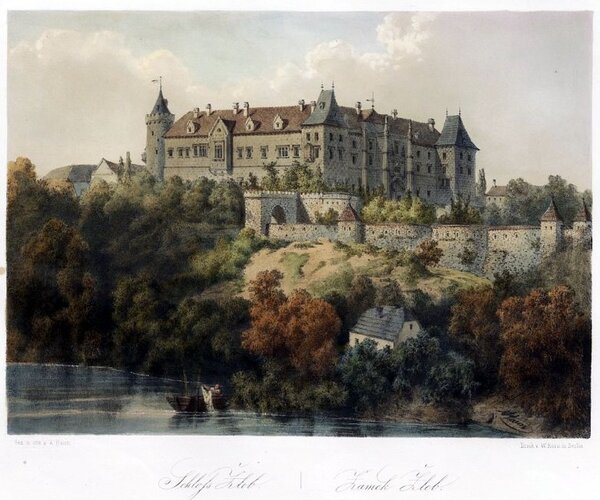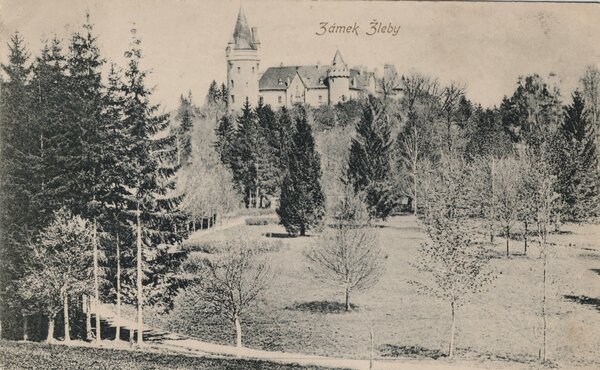History
A brief history of the Žleby Castle

The castle of Žleby was first referred to in 1289. The Gothic castle was probably built by the Lichtenburg house, and Charles IV, Roman Emperor and the King of Bohemia, bought it in 1356. During the following period, he rented (pledged) the castle to various aristocratic or knight tenants.
Under the siege in 1427, the castle surrendered to the Hussites who then partially tore it down and burned it. The current chateau is no doubt the result of the following reconstruction in late Gothic style, organized by John of Vizmburk in the middle of the 15th century. Žleby was one of the strongholds of the royal power of George Podiebrad (1420–1471) in Eastern Bohemia.
In the 16th century numerous pledge holders changed here; the most important of them were the members of the Hodkov house and Václav Chotouchovský of Nebovidy, who rebuilt the old medieval castle into a four-winged Renaissance chateau with the arcaded courtyard. The reconstruction took place probably in the second half of the 16th century and the chateau has kept most of this appearance so far. In the uneasy times of the Thirty Years War, unfavorable for building, the chateau was owned by Hermann Czernin or Rudolf Trčka.
As for other owners, it’s good to mention the most important ones at least: the Kaisersteins, Schönfelds or Auerspergs, who rebuilt the chateau into the Baroque style. During this reconstruction, the risalites on the main front façade were made, then very fashionable. Also the incomplete courtyard was built, and the farm on the western side next to the castle, with stables and apartments on the first floor.
The ancient Tyrolean house of Auersperg got hold of Žleby in 1754, and owned it until the 20th century. The best known owner of this house was Duke Vincent Charles Auersperg (1812–1867). As a young duke, he took control of his vast domain in 1832, at the age of twenty. In 1845, he married Princess Wilhelmina of the Colloredo-Mansfeld house, who became, together with her husband and his mother Gabriela, born Lobkowicz, the initiator of the Romantic reconstruction of the chateau. The most important addition was ramparts with many towers and spires, which should evoke the appearance of a medieval castle. For the reconstruction of the northern façade, they took inspiration in Elisabethan renaissance. The Auerspergs also changed the appearance of the interiors – equipped the chateau with collections of weapons, furniture, leather wallpapers, pictures, stained glass, manuscripts, books and luxurious kitchenware. The eastern wing of the chateau (now tour No. 1) was used for public tours since the end of the 19th century, and the indoor areas have kept their unique look and feel to the present day.
Duke Vincent Charles died in July 1867, and the domain was temporarily managed by his widow Wilhelmina, for their eldest son and heir Franz Joseph Auersperg (1856–1938). Vincent Charles’s wife and son kept the idea of romantic Žleby and improved it over time.
In 1938, after Franz Joseph’s death, Žleby was inherited by his son Ferdinand (1887–1942), who died childless not long after his father. The chateau was then inherited by the family of his sister Marie, born Auersperg, married Trauttmansdorff (1880–1960). In 1945, Žleby was confiscated pursuant to the President’s decree No. 12/1945. Nowadays, the chateau is owned by the state and managed by the National Heritage Institute.
